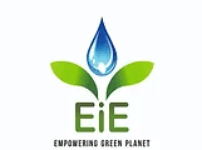Once an element with limited known uses, today lithium, the first metal of the periodic table and also its lightest metal (density around half that of water), plays a key role in the lives of people worldwide. Ever since the German-born American professor John Goodenough developed the Lithium-ion rechargeable battery in the 1980s, the demand for lithium has been growing by leaps and bounds.
In 2014, analysts declared the demand was rising by around 12% annually. Not surprising, given that any portable device you pick, chances are it runs on a lithium-ion battery. Clearly, the lightest metal on earth is no longer a lightweight.
Discovery of lithium
In the 2nd century AD, the Greek physician Soranus had written about the curative properties of the mineral-rich waters of his hometown Ephesus, then a Greek city, for promoting mental health. He advocated that patients suffering from mania and melancholia soak in the waters of these springs. We now know that these waters have high levels of lithium salts. The ancient Greeks like Soranus had neither isolated nor identified lithium, but they had discovered the link between the waters of mineral springs rich in lithium and the treatment of manic patients.
The first lithium mineral, petalite, was discovered around 1800 on the Swedish island of Utö by the Brazilian chemist and statesman José Bonifácio de Andrada e Silva.
In 1817, a 25-year old Swedish aristocrat and chemist Johan August Arfvedson, while analysing petalite ore in Berzelius’s private lab in Stockholm, realised he had stumbled upon a new element. He subsequently detected the same material in the minerals spodumene and lepidolite as well. Arfvedson found that the new element formed compounds similar to those of sodium and potassium, but that its carbonate and hydroxide were less soluble in water and more alkaline. The new element was named lithium, a name derived from ‘lithos’, the Greek word for stone, signifying that it had been discovered in a solid mineral, unlike other common alkali metals that had been discovered in plant material.
In 1818, the German chemist Christian Gmelin was the first to observe that lithium salts impart a bright red colour to a flame. Both Arfvedson and Gmelin made several attempts to separate lithium from its salts but failed. In 1821, the English chemist William Thomas Brande succeeded in isolating a small quantity of lithium by the electrolysis of lithium oxide, a process Sir Humphrey Davy had previously used for isolating the alkali metals potassium and sodium. Today, we know that lithium is toxic in larger quantities and corrosive too. But this was not known to the first scientists attempting to study it. Indicative of the times when scientists were not very vigilant or not overly concerned regarding their safety, in his book A Manual of Chemistry, Brande had written: “Pure lithia (lithium oxide) is very soluble in water, and its solution tastes acrid like the other fixed alcalis.” He also mentioned that the element lithium had not yet been investigated because of a difficulty in procuring an adequate quantity of its oxide.
In 1855, Robert Bunsen and Augustus Matthiessen produced sufficiently larger quantities of lithium through the electrolysis of lithium chloride. This paved the way for the commercial production of lithium in 1923 by the German company Metallgesellschaft AG, through the electrolysis of a liquid mixture of lithium chloride and potassium chloride.
A soft, silvery metal lighter than any other, lithium floats on oil and water. But attempting to float it in water would be a disaster, for like other alkali metals it reacts vigorously with water, even moisture in the air, producing immense heat, and even bursting into flames. Lithium is therefore stored by covering it completely in mineral oil, petroleum jelly, or any other non-reactive liquid. Its high reactivity is one reason why some lithium-ion batteries catch fire or explode at high temperatures.
Availability in nature
Lithium is a relatively rare metal present in a concentration of around 20 parts per million (ppm) in the earth’s crust, around 0.17 ppm in the oceans and in trace amounts in the atmosphere, the food we eat, and in our body. Being highly reactive, it is not found in the metallic, elemental state in nature, but rather in the form of compounds in minute amounts in igneous rocks and in the waters of many mineral springs. The major minerals containing lithium include spodumene, petalite, lepidolite, and amblygonite.
Traditionally, lithium is extracted from brine pools or mined from hard rocks. The latter is a time-consuming, energy-intensive and costly process for a lot of rock has to be dug out of the earth to get a small amount of lithium. The more economical and efficient way is by concentrating huge brine pools through solar evaporation. Lithium is then produced by the electrolysis of molten lithium chloride and potassium chloride. In Chile, Argentina, China, Russia, and the US, they use the brine-based extraction method.
The brines, that are volcanic in origin, are found in high altitude desert regions in the form of playas (where the basin surface mainly comprises silts and clays and the brine is underneath) or salars (salt lakes or salt flats where the surface is predominantly salt). Most of the world’s lithium production takes place in South America. The largest brine pool in the world is the salt flat in Bolivia called the Salar de Uyuni. A fascinating tourist attraction, it sits at a height of around 3653m and extends over 12,000 sq. km. and is believed to be one of the most awe-inspiring sights in South America.
Varied applications: Some flawed, others favourable
From around the mid-1800s, lithium-rich spa waters were recommended as a popular cure for gout, till this was proved to be more harmful than beneficial in 1912.
In the late 1940s, lithium chloride was sold as a salt substitute for people who suffered from heart problems and needed to be on a salt-free diet. In 1949, the sudden death of a number of such patients was found to be caused by lithium poisoning. The treatment was immediately banned and later the US FDA found that large doses of lithium chloride could adversely affect the kidneys.
In the late 1920s just before the onset of the Great Depression, a new soft drink called ‘Bib-Label Lithiated Lemon-Lime Soda’ was introduced in the American market. One of its ingredients was lithium citrate. To project it as different from the hundreds of other lemon-lime soft drinks already available in stores, the manufacturers advertised the supposedly refreshing health benefits of the small amount of lithium in the soda. The name of the drink was later shortened to – hold your breath – ‘7 Up’ which in the 1940s became the third best-selling soft drink in the world! The good news for 7 Up fans is that the lithium in the soft drink recipe was discontinued after 1950.
From the 1950s, lithium began to be used as lithium deuteride, serving as a solid fusion fuel in thermonuclear weapons, including the hydrogen bomb. Consequently, the demand for lithium rose considerably during the Cold War because of the production of nuclear fusion weapons. But, its demand decreased by the end of the nuclear arms race, resulting in a decline in prices of the metal.
Once commercial production of lithium commenced, till around the mid-1990s, the two main applications of the metal included its use for decreasing the melting temperature of the glass and for enhancing the melting behaviour of aluminium oxide during the Hall-Héroult process for manufacturing aluminium.
Lithium and its compounds have a host of other industrial applications as well. A magnesium-lithium alloy is used for armour plating. Aluminium-lithium alloys are used for weight reduction in aircraft, bicycle frames, and high-speed trains. Its low thermal expansion coefficient makes lithium suitable for producing glass that is resistant to sudden heating or cooling. It is therefore used for making heat-resistant crockery and other special ceramics and glasses, including the Mount Palomar telescope’s 200-inch mirror. Lithium stearate is added to petroleum to make a thick high-temperature lubricating grease that is used in the military and has industrial, automotive, marine, and aircraft applications. Lithium chloride, one of the most hygroscopic materials known, is used in air conditioning.
In 1949, an Australian doctor John Cade accidentally found that lithium carbonate could be used to treat manic depression or what is now called bipolar disorder, reinforcing what Soranus had noticed over two millennia ago. Today, lithium carbonate pills are the medication of choice for stabilising mood swings in people with this disorder.
Lithium-ion Batteries
However, the single most important use of lithium in the modern world is in rechargeable lithium-ion batteries. With consumers demanding longer-lasting, lighter, smaller, more powerful batteries for personal devices and industrial equipment, lithium was found to be the ideal element that could satisfy all these multiple needs. Today, lithium is used for making rechargeable batteries for mobile phones, digital cameras, iPods, laptops, mp3 players, power tools, grid-scale energy storage, and electric vehicles, and also non-rechargeable batteries for heart pacemakers, clocks, and toys.
Currently, Li-ion batteries have a crucial importance because of their attractive combination of high energy and power density, and also because they help to significantly reduce greenhouse gas emissions. To avoid a possible looming shortage in future, some researchers are working on developing better ways of recycling used lithium-ion batteries for recovering lithium. Others are focusing on improving the energy density and safety of the batteries.
References
- John Emsley: Nature’s Building Blocks: An A-Z Guide to the Elements – Oxford University Press, 2011
- William Thomas Brande: A manual of chemistry – New York, Pub. by George Long, 1821, pp 190
- Royal Society of Chemistry: Periodic Table – Lithium – http://www.rsc.org/periodic-table/element/3/lithium
- Lee R. McDowell: Mineral Nutrition History: The Early Years – First Edition Design Publishing, July 2017, pp 582-583
- Elizabeth Miller: 10 Facts About Lithium – Mental Floss, 3 April 2018
- Nathan Hurst: Charging ahead: The future of batteries – Smithsonian.com, 7 March 2017, https://www.smithsonianmag.com/innovation/charging-ahead-future-of-batteries-180962414/
- Andrew Tarantola: Where the Most Important Part of Your Battery Comes From – Gizmodo, 2 July 2013, https://gizmodo.com/where-the-most-important-part-of-your-battery-comes-fro-586442784
- Los Alamos National Laboratory: Periodic Table of Elements – Lithium – http://periodic.lanl.gov/3.shtml.































